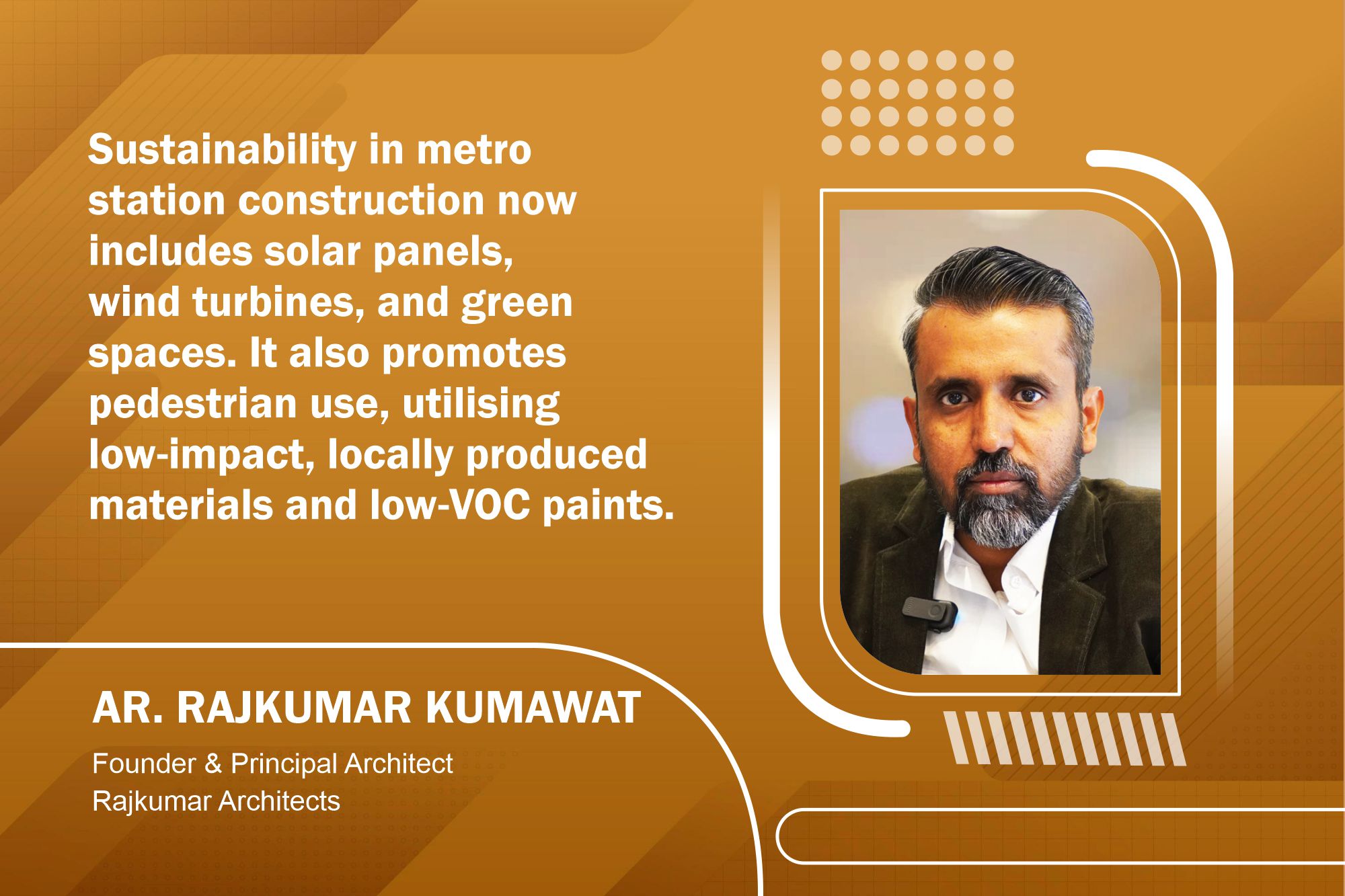Metamorphosis in Motion for Sustainable metro stations

This interaction delves into the principles, advancements, and strategies driving the evolution of modern railway and metro station design, ensuring passenger flow and accessibility in the design of metro stations.
What principles should be prioritised when designing metro stations to ensure passenger flow and accessibility?
Clear signage, including maps and informational displays, is vital for passengers to navigate the station more quickly. Passenger flow can be improved even further by offering amenities such as bathrooms, water fountains, and protection from the elements. Finally, using other forms of public transportation, such as buses, Trams, and bicycles, would improve connectivity and accessibility.
Can you discuss the role of sustainability in the design and construction of modern railway and metro stations, including energy efficiency and materials selection?
Sustainability has progressed from a phrase to an essential component in the construction of metro stations. These stations use solar panels and wind turbines to eliminate the demand for HVAC equipment. Green spaces and roofs are also used to mitigate the heat island effect. These stations promote pedestrian and bicycle use to reduce carbon emissions. Furthermore, the station’s environmental care is shown using low-impact, locally produced materials and low-VOC paints and adhesives during construction.

What technological advancements have you observed that are currently influencing the design of railway and metro stations, and how do these innovations enhance the passenger experience?
Advances in technology have improved the passenger experience at metro stations. The concept of contactless tickets and smart map systems has made travel more convenient for passengers. It lowers queue time and physical contact, making travel more convenient for consumers. Technology has enabled passengers to effortlessly link maps and interact with tailored directions on their cellphones to challenging stops, making it simple and accessible.
How would you prioritise safety and security in the architectural planning of railway and metro stations, and what measures shall be implemented to mitigate potential risks?
Rigorous security measures should be included in the design of railway and metro stations to reduce the possibility of danger. Surveillance cameras, access control systems, and call centres should be strategically located to ensure effective ground communication. Routine maintenance and infrastructure inspections, such as tracks, platforms, and escalators, are critical for immediately identifying and managing dangers. Staff members should receive sufficient training so that they are prepared to handle emergencies properly and aid passengers as needed.
What will be your approach to integrating railway and metro stations into urban environments, considering factors such as land use, pedestrian access, and aesthetic integration?
To fit into urban surroundings, metro stations should be constructed with purpose and context in mind. Integrating aesthetics is essential for making stations visually appealing and fitting into their urban settings. Architectural design aspects representing local character and identity, such as facades influenced by local landmarks or elements, enhance existing structures. Constructing pedestrian-friendly pathways, such as large paths, pedestrian Walkways and underpasses, can allow passengers to travel freely.
For more information, visit: https://rajkumararchitects.com/
8
Cookie Consent
We use cookies to personalize your experience. By continuing to visit this website you agree to our Terms & Conditions, Privacy Policy and Cookie Policy.







